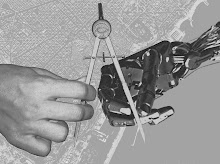After reading this article I seemed to have opened many more mental doors regarding my thesis. As I continue the discussion of the culture vs. technology I find more and more examples of both pulling me back and forth. Silvetti brings up a two crucial periods in time that made me think of differently in how the architecture world impacts technology and our culture.
"And since I want to focus not on the specific buildings and architects, but instead on design strategies and techniques that [produce architectural form, and the ideas and ideologies behind them, suffice it to sat that the period and corpus I am looking at cold be bracketed by the exultant irruption in the world and in our imagination of the Guggenheim Bilbao and the wound to out affects left by the physical consequences of September 11 attach, the disappearance of two buildings we did not know we would miss so much."
My focus being mostly on the mention of the Guggenheim and the Twin towers. Both of these icons in architecture were only considered famous, not because of the architectural genius but, because of the cultural identity that they knowing and unknowingly had among the community. For example, the Guggenheim is well known to be an icon in Spain now because Frank Gehry placed an extravagant (and unorthodox) piece of architecture in a city that was struggling at the time. Its presence redefined much of the culture, though some believe its was not entirely positive. The Twin towers on the other hand, had quite a different impression on the American culture. The fact that the architecture was indeed an American icon that had graced the NYC skyline for so long was a shock to the public when it was no where to be seen within hours. Though that moment in time has been known for its negative affects, one can see the slight change in culture that it has provoked; that is, increase in security and an overall sense of pride for freedom (Hence: The Freedom Towers)
Another quote that seemed to help with my thesis brainstorming would be categorized more with the technology of architecture.
"We make Blobs because we can, and that was, for a while, sufficient reason...Yet I would like to emphasize their valid promise of more substantial achievements, which must be pursued, since technology has become a natural part of our doings"
Advancement in building methods and design tools has allowed architecture to design many buildings that often are only based on form and not function. As the demand for more sustainably increases, the bar continues to rise on expectations of building performance. Even the 'Blobs' that were possible before due to advancements in materiality seem to now also rely on the advancement of green technologies. it is an evolution of technology... a culture of technology
Monday, September 14, 2009
Subscribe to:
Post Comments (Atom)

I like where you are getting at in the end, how technolgy and its advancement becomes a culture of its own. I think that it very true and we see it everyday, even as students. For example, I think that we have amazing opportunities at school to learn more about these technologies thanks to dfab, and the classes revolving around, and I think that thanks to everyone's background and interest, we can start to see how these technologies affect the way we develop projects, and also how each person's culture combined with the same technology can create very different results. Why is it that in different countries, that have the same technologies, the buildings show very different qualities, in terms of their influence on their respective cultures?
ReplyDeleteYour mentioning of the Guggenheim and the Twin towers is very interesting. These are two cases where the buildings have had an impact on the culture and society of the surrounding environment, instead of allowing the culture of the "place" to affect the building. I wonder if these are examples of "program" as defined by Silvetti, where the architects had a preconceived idea of how the buildings will function before they were built. If so, are these two successful cases where the form of the building begins to dictate the actions occuring within and adjacent to it? Instead of the other way around.
ReplyDelete